Rabbit production can be an extremely profitable business if managed properly. Rabbit business requires little space and can be done on a farm, in someone’s backyard, or even in a small house. Rabbit farming, called Cuniculture, is the agricultural practice of breeding and rearing domestic rabbits as livestock for their meat or wool.
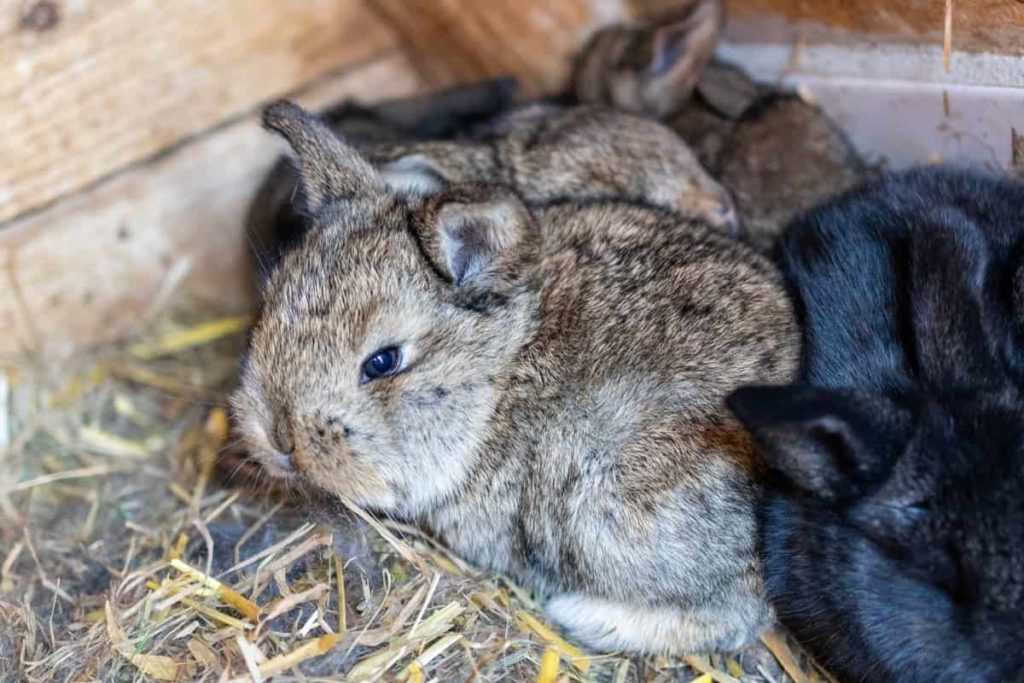
It is more profitable than other animal farming, as it requires little capital by having a small space to start, and it is an animal that is very rewarding. Starting Rabbit farm with just two does and one buck, you can have 50 rabbits or more within a year. Below are 14 key principles for good management tips for the success of Rabbit farming.
Key rules for effective Rabit farm management
Effective management practices in rabbit farming
Good management Rabbit farm practices include handling, feeding, breeding, disease control, sanitation, etc.
Handling Rabbits – Rabbits are restless animals. It must be handled gently and carefully so as not to frighten it. The rabbit is usually lifted by holding the loose skin of the neck area with one hand and placing the other hand under the hindquarters to support the weight. The ears should not pick up rabbits. If needed, the ears can be held together with the loose skin of the shoulder area. Careless handling or improper security can lead to fracture and injury as it continues to struggle to escape.
Sanitation – Strict sanitation practices are of utmost importance in rabbit farming. Improper or inadequate sanitation can lead to various infections by spreading infectious germs. Buildings should be well ventilated and adequately lit. Overcrowding should be avoided as many diseases are spread by contact. Sterilization may not provide 100% protection. But, this should be done to minimize the spread of infection.
Regular, preferably daily, removal of waste, including manure, soiled bedding, and nesting material, is essential in cages with solid or wire floors. It should be done to prevent the breeding of flies and thus infection by them. Wastes must be removed from the premises every day. All equipment, including water bottles, feed trays, and nest boxes, should be washed periodically with soapy (hot) water and then rinsed with chlorine or a suitable disinfectant solution or steam. Rabbit hair can cause a problem. These hairs can stick anywhere in the cages.
Identification – Some breeders may prefer to make arrangements for breed identification. Permanent identification can be made through rings, ear tattoos, ear tags, ear clips, or color-coded ear buttons. Leg rings can also be used for this purpose.
Key rules to improve rabbit productivity
- First of all, rabbits are small animals. Therefore, they require less space, food, maintenance, and management. Rabbits can eat waste, and they are efficient at extracting protein from forage. So, it allows you to start a rabbit farm in your backyard, terrace, and home.
- Raising rabbits requires very little initial investment compared to other livestock businesses. However, it demands investment for house preparation, breeds, feeds, equipment, etc.
- Before starting this business, you should conduct a market survey. Check the demand for specific types of rabbits in your area. Additionally, identify local farms that are already raising rabbits. Identify their marketing policy. Additionally, examine the demand for rabbits as pets and meat purposes.
Effective importance of rabbit farming
- Rabbit farming has been a good source of income over the years. It provides income from small investments within a short period.
- Moreover, rabbit farming is an agricultural activity.
- Housing plays the main role in rabbit farming, depending on the farm’s climate, location, and size.
- Rabbits are one of the fastest-growing animals. The labor required for rearing rabbits is less than that of other animals.
- The cost of farming rabbits is very low compared to other large animals.
- Rabbit rearing business can be done throughout the year as the product remains the same throughout the year, and it is an excellent source of income.
- Rabbits can easily be converted into food.
In case you missed it: Rabbit Diseases, Treatment, Rabbit Care
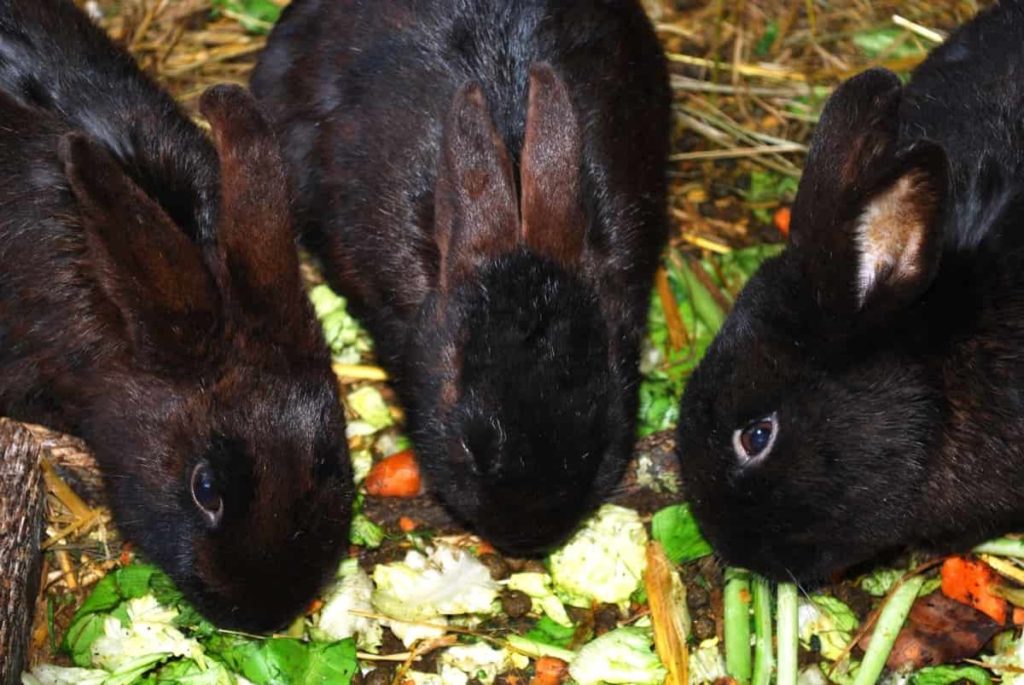
Effective rules for selecting breeds for rabbit farming
There are many breeds available worldwide. However, it would be best if you choose the breed based on specific requirements and the agro-climatic condition of your area. Here is a list of the most productive breeds you can consider for your rabbit farm.
| White Giant | Rex |
| Grey Giant | Champagne d’ Argent |
| Angora | English Spot |
| Flemish Giant | Flemish Giant |
| American Chinchilla | New Zealand White |
| Checkered Giant | New Zealand Red |
| Silver Marten | Californian |
| Soviet Chinchilla |
Management tips to know about raising rabbits
- The biggest secret to raising a healthy rabbits family is providing them with a clean habitat.
- Good housekeeping helps prevent and control the disease.
- The huts should also be kept clean to prevent insects from using the litter as nesting material.
Good production practices to reduce the production cost
- Rabbits eat grass and other greens only if the plants’ tips point upwards. They like to curl from the ends down towards the roots. If the stalks are bent downwards, the rabbits will ignore the pasture and eat only the other food you provide.
- A rabbit’s daily diet should be mostly hay, a small number of fresh vegetables, and a small number of pelletsUnlimited, high-quality grasses, such as timothy, garden, or brome, should make up the bulk of the rabbit’s diet.
- Some leafy greens like Dandelion Greens, Collard, Parsley, Kale, Swiss Chard, and Rabbit also eat Escarole in small amounts. Other acceptable vegetables include Broccoli, Brussels Sprouts, Endive, Green Peppers, Wheatgrass, Radicchio, and Squash. Head Lettuce or Iceberg should not be fed, as it is water and contains minimal nutrients.
- In general, rabbits can eat grains, legumes, and green fodder such as Lucerne, Desmanthus, and various kitchen waste, including Carrots, Cabbage leaves, and other vegetable waste. If raising rabbits on a concentrated diet, try providing them green food. For 1 kg of rabbit weight, you can feed them about 40 grams of concentrate and 40 grams of green food. Try to provide them with good and nutritious food and plenty of fresh and clean water per their demand.
Effective ways to make money in rabbit farming
You can raise rabbits in two ways. One is a deep letter system, and the other is a cage system. You must provide good accommodation in both cases because you must protect the rabbit from weather conditions, rain, sun, and predators like dogs or cats. Ensure you provide ventilation, lighting systems, cooling, and heating in the rabbit housing. Also, you can use insulated roofs to reduce excess heat and condensation in winter.
Additionally, maintain the cleaning system regularly. Proper sanitation helps protect your farm from various diseases and pest attacks. Make sure there are enough lights inside the house. Moderate light management helps rabbits grow well and is essential for their fertility. Rabbit farming can be done in 2 ways such as;
- Deep litter farming and
- Cage farming
Deep Litter method – A concrete floor is suitable here and is very suitable if you are raising a few rabbits. In this process, up to 30 rabbits can easily be reared in this system. You must make a 4- to 5-inch-deep pile of straw, straw, hay, and wood shavings. Then it would help if you separated the men from the women. In this system, the disease risk is high, and rabbits are difficult to manage.
Cage method – This process is suitable for raising the maximum number of rabbits and is suitable if you are doing it commercially. In this system, rabbits are kept in separate cages made of iron and wire. It would help if you kept males and females in separate cages. Have enough space and necessary facilities. Keep females and males together during breeding.
In case you missed it: Rabbit Feed Chart and Weight Chart
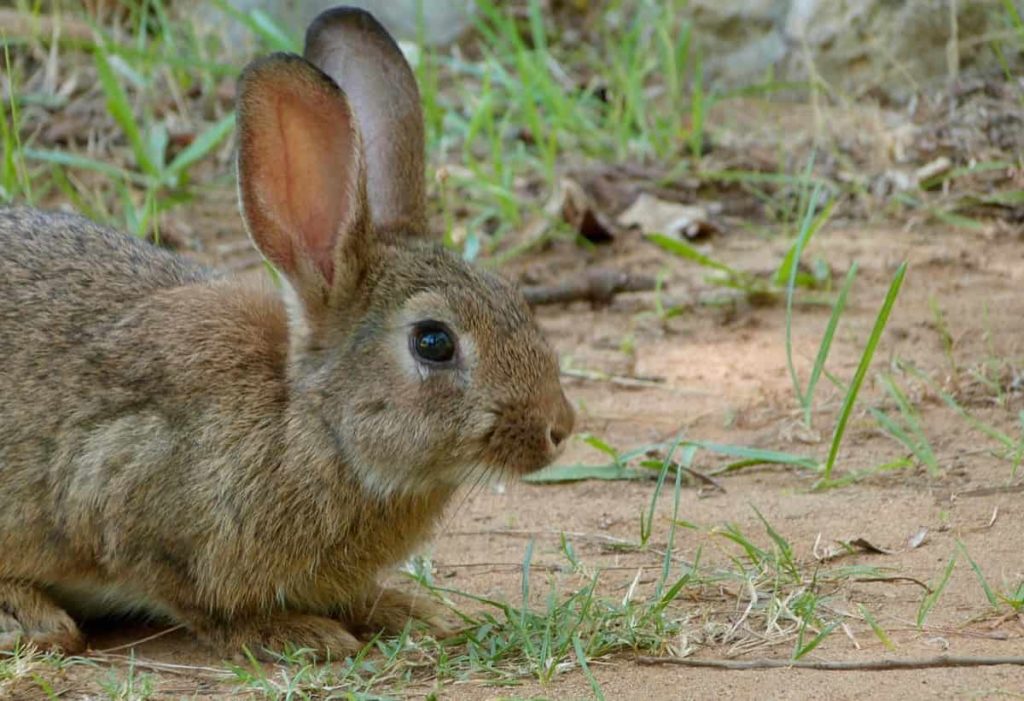
Effective management tips to control problems in rabbit farming
Major challenges in rabbit production include lack of breeding stock, inadequate rabbit feed, poor management (feeding, housing, and health care), technical support from extension services, lack of access to credit, and inadequate equipment supply. Rabbit farmers are always ready and willing to face the challenges involved in achieving efficient meat production, high mortality levels in kits (baby rabbits), and adverse effects related to does (female rabbits). In addition, they are addressing issues such as energy balance concerns.
Producers are keenly aware of the need to achieve good results in breeding with a constant awareness of the need to minimize costs on maintaining health and reducing the sector’s impact on antimicrobial resistance. However, intensive breeding practices, poor feeding systems, and poor hygiene conditions are all sources of stress in rabbit farming, which can cause immunodeficiency and dysbacteriosis.
The natural resistance of farmed rabbits may deteriorate, leading to an inevitable increase in disease incidence in production units. Potential knock-on effects include impaired digestion and metabolism and the appearance of intestinal infections, resulting in reduced productivity and increased mortality.
Key rules for Rabbit breeding management to stay healthy
Rabbits reach breeding age at 5 to 6 months of age. However, never use young rabbits for breeding until one year old. They select male rabbits for commercial purposes based on age and weight. The female rabbit’s gestation period is 28 to 31 days. If females are sick, never give them bread. Provide adequate and nutritious food to breed males and females. The right food should be grass and hay to help prevent dental and intestinal disease.
Check that your rabbit eats daily and has plenty of dry droppings. If their eating habits change, or the drops are reduced or stopped, ask your doctor immediately – they could be seriously ill. They checked for signs of illness or injury every day, including if you walk. Their front teeth and nails are checked at least weekly – they grow quickly. Only doctors should correct overgrown or misaligned teeth.
Veterinary checkups, at least annually – including treatment for external and internal parasites such as fleas and worms. Vaccination against myxomatosis and viral hemorrhagic disease (VHD), as your doctor advises. Keep away from wild rabbits and areas where wild rabbits live – they can carry diseases. To be identifiable and ideally microchipped so they can be treated quickly if injured or lost.
Rabbit farm care tips for reducing production cost
- Environmental care – It is important to keep the environment clean as common diseases can easily affect rabbits. Some diseases that attack rabbits are coccidial infection, mite and lice infection, and other viral and bacterial infections. Rabbits are easily attacked when the environment is not clean or they are fed contaminated food. So, it is important to disinfect and wash their environment to keep it clean and dry. A clean environment is important in preventing diseases that attack rabbits.
- Rabbits need fresh water daily – We all know that every living thing needs water to survive, and rabbits are no exception. A rabbit’s diet is incomplete without fresh water.
- Get a clean plastic or metal bowl that will be used to water these pets. You must change your rabbit’s drinking water daily to prevent bacterial growth. Always remember that rabbits get dehydrated easily.
- Please provide them with clean water daily using the water container that works best for them. Work with a veterinarian to make sure your rabbit receives regular health care. Like many other pets, rabbits need regular veterinary care to stay healthy.
- Talk to your veterinarian about rabbit’s health and learn about your veterinarian’s preventive care recommendations. Many veterinarians recommend spaying or neutering rabbits to prevent cancer and behavioral problems.
- Additionally, your rabbit should visit the veterinarian every 6-12 months for a health checkup, a complete physical exam, vaccinations, and a dental checkup. Rabbits are prone to overgrown dental problems, so it’s not uncommon for rabbits to need dental care throughout their lives.
In case you missed it: Organic Rabbit Farming – Production, Raising Practices
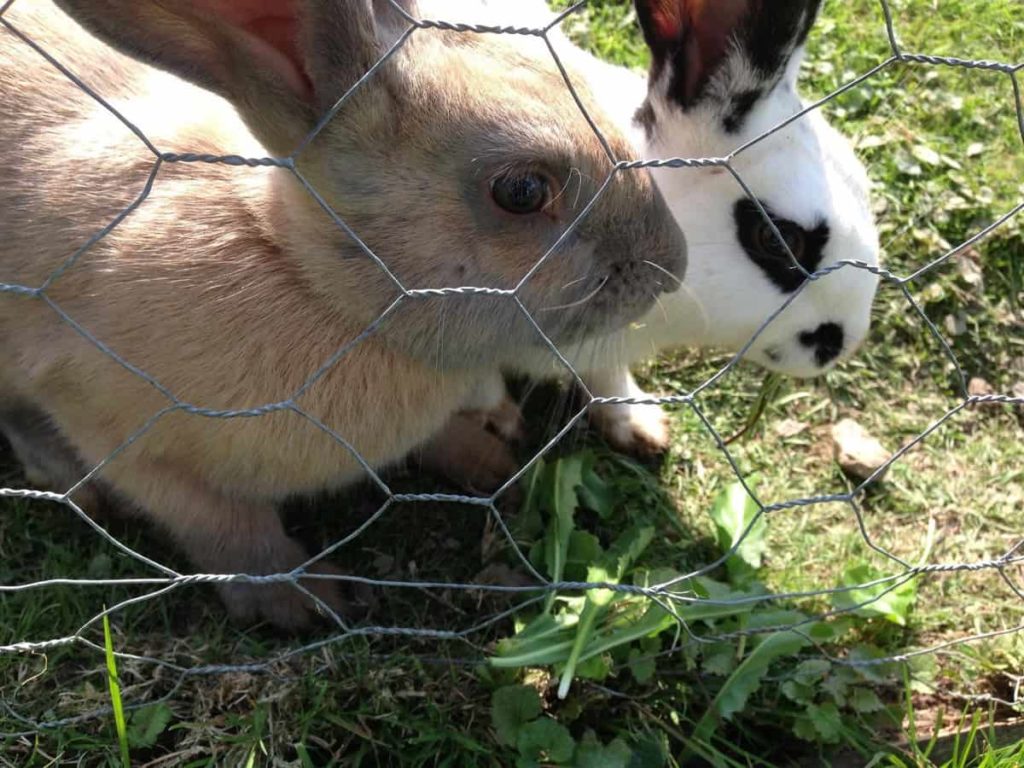
Rabbit disease prevention control for more production
- Sanitation conditions of rabbit cages, sheds, and equipment, a balanced diet, and fresh, clean water are important to prevent the possibility of infection.
- Rabbits must be prevented from coming into contact with feces. Overcrowding must be avoided. Adequate ventilation must be provided.
- Rabbit cages should be disinfected with a blow lamp after each feeding and burning before moving puppies and after weaning. Burn dead sick rabbits together to prevent the spread of diseases. Nest box bedding should be burned after use. Dead animals should be buried immediately after a post-mortem (if necessary).
Increasing the productivity and profitability of rabbit farming
It is also very profitable for farmers and young entrepreneurs as they can start this business as an agribusiness to earn money.
- Choose a place for your rabbit – One good thing about rabbits is that it can be done at home; it does not require huge acres of land, even if you are going for commercial purposes. Rabbits can be raised free-range, but keeping them indoors or in cages is better.
- Most rabbit breeders prefer outdoor living quarters to experience fresh air and sunshine all the time, but the environment may not be conducive for them to live outdoors. Farmers who are experts in this field advise that rabbits benefit more from living indoors than outdoors. It is true because they are safer on free-range practices than outside in cages, where they can be easily trapped by predators such as snakes, dogs, and insects that can harm them.
- Know the breeds of rabbits – There are several breeds of rabbits. Studies show that there are more than 305 breeds of pets in more than 70 countries around the world. Study the breeds carefully and decide which breed you are going for. It is advisable to start with a particular rabbit breed and then add others later to avoid mismanagement. Also, choosing the breed of rabbit you want to raise is important to consider as a pet rabbit.
- Choose the right cage size – You need to get the right cage for your rabbit as overcrowding can impose health risks and cause stress.
- Environmental Care – Keeping the environment clean as always is very important as there are common diseases and health conditions that rabbits can easily affect.
Key rules for profitability in Rabbit farming
Rabbit farming starts giving profit within 6 to 7 months of starting the farm. It is profitable when you take proper care and management of the rabbits. Profit margin is very high as compared to other farming due to the following reasons;
- Low maintenance charges
- Low cost of feed
- Fast productivity
Yes, rabbits are profitable. When sold for meat, a rabbit can make a significant gross profit of $30 – $40. Scale a rabbit to 1000, and an estimated gross profit of $30,000 to $40,000 can be made. The important factors in keeping a healthy rabbit herd are cleanliness, good ventilation, close observation, and protection from rain and sun.
Effective marketing tips for Rabbit farming
Marketing rabbit products is not so easy in some areas. So please define your marketing plan before starting your business. You can also try local markets or the nearest city. You can make the most of the rabbit farming business with proper care and management. Remember that try to take good care of your animals. Feed them nutritious food, clean their house, and buy healthy breeds. This way, you can make the rabbit farming business highly profitable.
Conclusion
The profitability of rabbit farming depends on the selection, maintenance, and good management of suitable rabbit breeds. But choosing the right breed of rabbit is most important. There are many breeds available worldwide. They are very gentle and calm animals and will not cause any trouble. The above information is useful to improve production/productivity in Rabbit farming.
In case you missed it: Top 50 Rabbit Farming Tips, Ideas, and Techniques
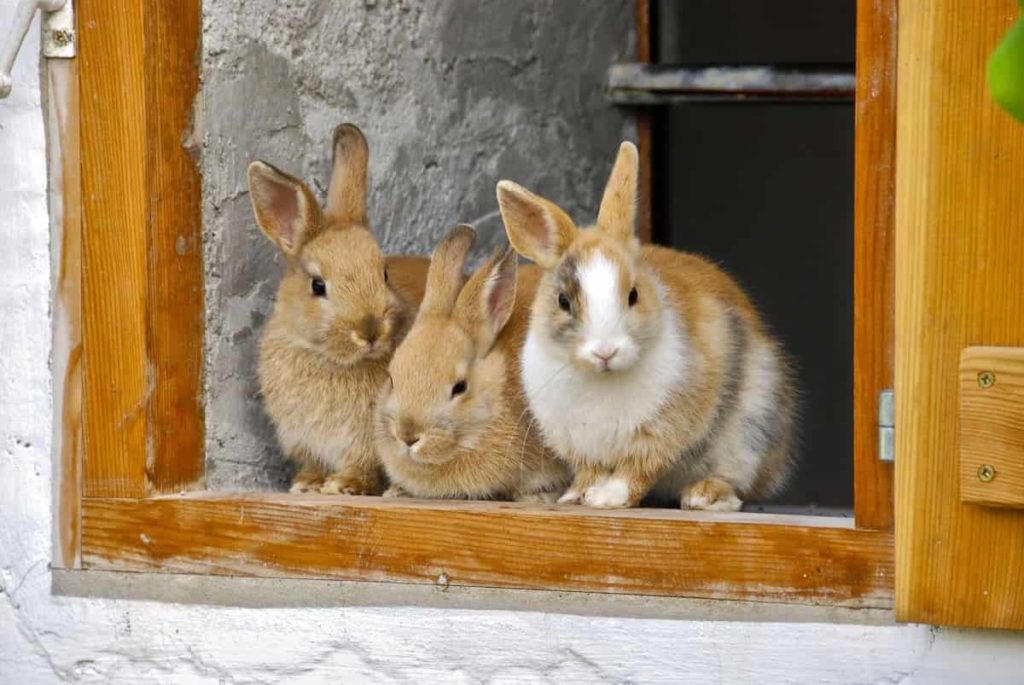
Frequently asked questions about Rabbit farming
Is rabbit farming a profitable business?
Rabbit farming is not only a profitable business but also enjoyable. People can raise a rabbit as a pet and grow it even on a small land without much investment.
Which breed of rabbit is best for commercial purposes?
The most common breeds are the New Zealand White, California White, Chinchilla, French Loup, Dutch, Checkered Giant, Giant Flemish, Angora, and Rex. These breeds can be crossbred to obtain a combination of preferred characteristics.
Is rabbit farming successful?
Rabbit farming is a growing business that is becoming popular due to the increasing demand for rabbit meat. The rabbit farming business is even more affordable to start as you will need very little investment. Rabbits and pigs give more profit.
What are the benefits of rabbit farming?
- It is a successful business.
- They make great compost.
- The rate of growth is fast.
- They are cheap to farm.
- They eat a variety of plants.
- Less labor is required, and the cost is involved.
- There is no religious taboo about eating rabbit meat.
What is the economic importance of rabbits?
Rabbits can be of great economic value to the family and the community. They also provide meat, a source of fertility, and other products that can be sold immediately for cash or turned into nutritious food when needed.
What are the main foods given to rabbits?
Fresh, clean drinking water and good quality grass and hay should make up most of your rabbit’s diet. A rabbit’s digestive system needs grass or hay to function properly, so a healthy supply is essential. In addition, you can eat leafy vegetables and small amounts of pellets.
Should we give water to the rabbit?
In short, water is very important. Rabbits have access to plenty of fresh water at all times. Rabbits eating lots of fresh grass and vegetables drink less, while those eating mostly grass drink more. Bowls are better than bottles because it is more natural for rabbits to lap from the bowl.
In case you missed it: How this Farmer Made 1 Lakh from Rabbit Farming – A Success Story
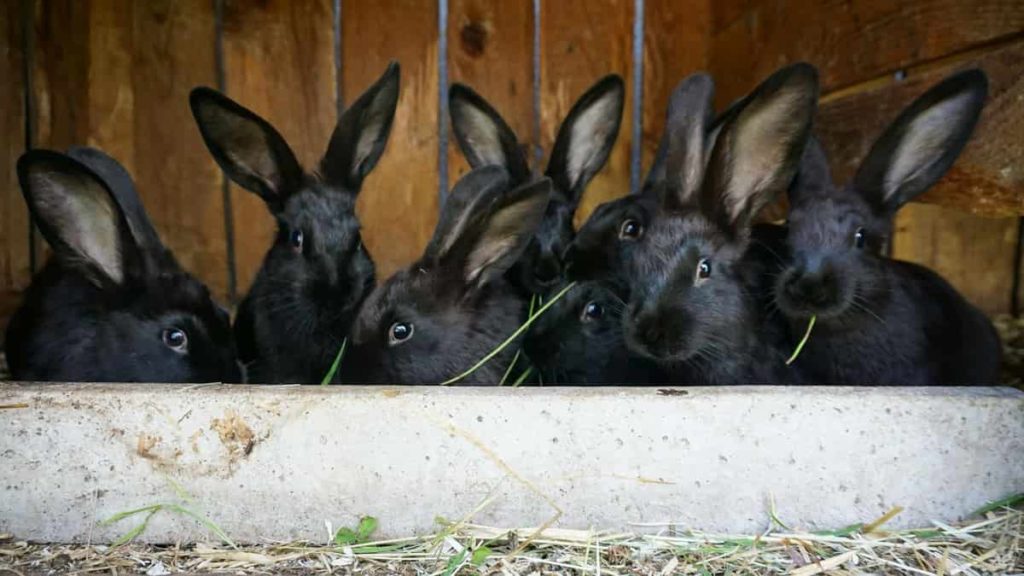
Which rabbit is best for farming?
New Zealand White (NZW) and Californian are two medium-sized breeds, the most important for meat production.
Do rabbit farms make money?
They can provide multiple income streams. Rabbits can be sold as meat, pets, or breeding stock.
- How to Make Houseplants Bushy: Effective Tips and Ideas
- Innovative Strategies for Boosting Coconut Pollination and Yield
- Pollination Strategies for Maximum Pumpkin Yield
- The Complete Guide to Chicken Fattening: Strategies for Maximum Growth
- Natural Solutions for Tulip Problems: 100% Effective Remedies for Leaf and Bulb-Related Issues
- Revolutionizing Citrus Preservation: Towards a Healthier, Greener Future
- Natural Solutions for Peony Leaf and Flower Problems: 100% Effective Remedies
- Maximizing Profits with Avocado Contract Farming in India: A Comprehensive Guide
- Natural Solutions for Hydrangea Problems: 100% Effective Remedies for Leaf and Flowers
- The Ultimate Guide to Choosing the Perfect Foliage Friend: Bringing Life Indoors
- From Sunlight to Sustainability: 15 Ways to Use Solar Technology in Agriculture
- The Ultimate Guide to Dong Tao Chicken: Exploring from History to Raising
- The Eco-Friendly Makeover: How to Convert Your Unused Swimming Pool into a Fish Pond
- Mastering the Art of Delaware Chicken Farming: Essentials for Healthy Backyard Flocks
- 20 Best Homemade Fertilizers for Money Plant: DIY Recipes and Application Methods
- How to Craft a Comprehensive Free-Range Chicken Farming Business Plan
- Brighten Your Flock: Raising Easter Egger Chickens for Beauty and Bounty
- How to Optimize Your Poultry Egg Farm Business Plan with These Strategies
- Subsidy for Spirulina Cultivation: How Indian Government Schemes Encouraging Spirulina Farmers
- Ultimate Guide to Raising Dominique Chickens: Breeding, Feeding, Egg-Production, and Care
- Mastering the Art of Raising Jersey Giant Chickens: Care, Feeding, and More
- Ultimate Guide to Raising Legbar Chickens: Breeding, Farming Practices, Diet, Egg-Production
- How to Raise Welsummer Chickens: A Comprehensive Guide for Beginners
- How to Protect Indoor Plants in Winter: A Comprehensive Guide
- Ultimate Guide to Grow Bag Gardening: Tips, Tricks, and Planting Ideas for Urban Gardeners
- Guide to Lotus Cultivation: How to Propagate, Plant, Grow, Care, Cost, and Profit
- Agriculture Drone Subsidy Scheme: Government Kisan Subsidy, License, and How to Apply Online
- Ultimate Guide to Raising Araucana Chickens: Breed Profile, Farming Economics, Diet, and Care
- Bringing Hydroponics to Classroom: Importance, Benefits of Learning for School Students
- Ultimate Guide to Raising Polish Chickens: Breed Profile, Farming Economics, Diet, and Care
- Ultimate Guide to Raising Australorp Chickens: Profile, Farming Economics, Egg Production, Diet, and Care
- Silkie Chicken Farming: Raising Practices, Varieties, Egg Production, Diet, and Care
- Sussex Chicken Farming: Raising Practices, Varieties, Egg Production, Diet and Care
- Homemade Feed Formulations for Livestock: Discover Cost-effective Starter to Finisher Feed Recipes
- 20 Best Pig Weight Gain Supplements: Top Swine Weight Gain Formulas
- Ultimate Guide to Elderberry Farming: Propagation, Planting, Yield, Cost, and Profit